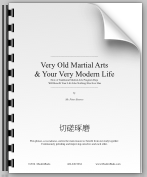What is the History of the Hontai Takagi Yoshin Ryu?
The roots of the Takagi Yoshin Ryu trace back to the thirteenth year of the Eiroku Period (1570) at the foot of Mount Futagata in the ancient province of Rikuzen (now Miyagi Prefecture) where a monk named Unryu lived. He devised methods for shurikenjutsu, bojutsu and taijutsu, which he referred to as “Sessho Hiden”. Among his disciples was a samurai named Ito Kii no Kami Sukesada, who combined the Sessho Hiden with his own knowledge of bojutsu to create methods of sojutsu, naginatajutsu, san shaku bojutsu, kenjutsu and kodachijutsu and founded his own bujutsu lineage, the Ito Ryu.
In the second year of Shoho (1645), Takagi Oriemon Shigetoshi received menkyo kaiden in this lineage and incorporated techniques influenced by sumo to create his own Jujutsu lineage, the Takagi Ryu, containing 12 techniques Omote, 24 techniques Ura and 12 techniques Sabaki.
During the Tenpo Era, at the end of the Tokugawa Shogunate, three top students of the thirteenth soke of the Takagi Yoshin Ryu (Yagi Ikugoro Hisayoshi) branched off to create their own lines of Takagi Ryu. The resulting lineages were the Seito-ha Fujita Takagi Yoshin Ryu, Ishibashi Takagi Ryu and Ishitani Takagi Yoshin Ryu. The Fujita and Ishitiani Takagi Yoshin Ryu are taught within the curriculum of the Jinenkan.
Takagi Oriemon Shigetoshi, Founder of the Takagi Ryu
Takagi Oriemon Shigetoshi was born on April 2nd, 1625 as the second son of Inato Sanzaemon, a kenjutsu instructor and samurai retainer of Katakura Kojuro. According to the records of the Hontai Yoshin Ryu, he traveled at a young age to the city of Dewa (in modern day Akita and Yamagata prefectures) where he studied the Muto Ryu Kodachijutsu as well as Kyochi Ryu Sojutsu.
One night during his absence, his father was murdered by an assailant. Upon hearing the news of his fathers death, Oriemon swiftly returned to his home town for vengeance and changed his name to Yoshin Ryu Takagi Oriemon Shigenobu, a decision that was influenced by his father’s words, “yoboku wa tsuyoku, takagi wa oreruzoyo” roughly meaning “a willow is flexible, but a tall tree will break”. He died on October 7th, 1711.

